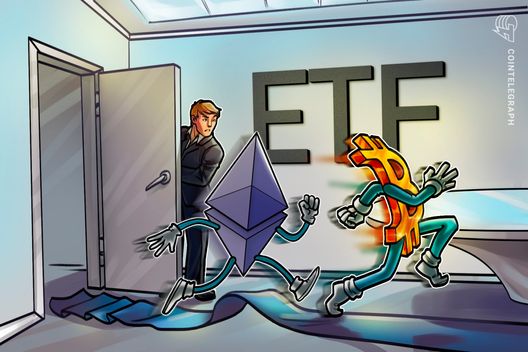MegaETH, a rapidly emerging Ethereum scaling network known for its ultra-fast transaction processing, has announced the launch of its own native stablecoin, USDm, in collaboration with the decentralized finance (DeFi) protocol Ethena (ENA). This strategic move, highlighted in a recent blog post, aims to enhance efficiency and reduce transaction costs on the MegaETH blockchain by integrating the stablecoin directly into its ecosystem.
According to Shuyao Kong, co-founder of MegaETH, the introduction of USDm is set to benefit users by lowering fees and expanding the potential for innovative applications within the network. Initially backed by Ethena’s USDtb, a token associated with BlackRock’s innovative tokenized money market fund, USDm may eventually incorporate additional tokens issued by Ethena, such as USDe, signaling an evolving financial landscape.
“USDm means lower fees for users and a more expressive design space for applications,” stated Shuyao Kong in the announcement.
This move comes as stablecoins continue to surge in popularity, with the market now valued at around $270 billion, primarily tied to the U.S. dollar. Stablecoins play a crucial role in providing liquidity and facilitating trading on cryptocurrency platforms, while also offering a faster, more cost-effective alternative for cross-border transactions compared to traditional banking systems. The recent regulatory developments, including the signing of the GENIUS Act, have further bolstered the legitimacy of cryptocurrencies in the U.S.
The initiative by MegaETH is just one example of the broader trend in the cryptocurrency industry, where various ecosystems are creating their own stablecoins, reducing reliance on established players like Circle’s USDC and Tether’s USDT. Notably, MetaMask recently announced a similar initiative in partnership with M0 and Stripe’s Bridge, and Hyperliquid is actively seeking a partner for its own stablecoin.
With this stablecoin launch, MegaETH not only reinforces its commitment to enhancing user experience on its platform but also embraces the opportunity to assist others in navigating the stablecoin implementation process through Ethena’s established framework, which currently supports the $13 billion digital dollar known as USDe.

MegaETH Launches Native Stablecoin USDm in Partnership with Ethena
Key points related to the impact of MegaETH’s initiative:
- Introduction of USDm Stablecoin
The new stablecoin aims to reduce transaction costs, benefiting users significantly.
- Partnership with Ethena (ENA)
This collaboration is designed to enhance the usability and utility of the stablecoin within the MegaETH ecosystem.
- Revenue Redistribution Model
USDm intends to subsidize sequencer costs using revenue from reserve assets, ensuring low fees.
- Backing by USDtb
The stablecoin is initially backed by Ethena’s USDtb, which generates yield through BlackRock’s fund.
- Increasing Relevance of Stablecoins
Stablecoins are vital in the crypto space, facilitating liquidity and trading, thus impacting user’s trading strategies.
- Regulatory Support
The GENIUS Act supports growth in the stablecoin sector, potentially leading to wider adoption.
- Emergence of Proprietary Stablecoins
The shift towards proprietary stablecoins reflects a trend that may influence the competitive landscape, leading to more options for users.
- Innovation in Stablecoin Issuance
Ethena’s venture into stablecoin-as-a-service could open new opportunities for various crypto ecosystems to develop tailored financial solutions.
“We are excited to work with Ethena to enable a win-win scenario for all stakeholders in our ecosystem.” – Shuyao Kong, Co-founder of MegaETH
MegaETH Launches USDm: A Strategic Move in the Stablecoin Landscape
The introduction of MegaETH’s USDm stablecoin marks a pivotal moment in the evolving stablecoin arena, particularly as the demand for swift and cost-effective transactions continues to surge. By collaborating with the DeFi protocol Ethena, MegaETH positions itself uniquely in a competitive market that predominantly features giants like USDC and USDT. This strategic partnership aims not just to enhance user experience with lower fees, but also to create a more expansive framework for decentralized applications. The involvement of Ethena’s governance token (ENA), which has recently seen a healthy uptick in value, underlines the robustness of this partnership.
One of the competitive advantages of USDm lies in its dual backing strategy, starting with Ethena’s USDtb, tied to a yield-generating asset linked to BlackRock’s tokenized money market fund. This innovative backing could attract users looking for stability and yields, setting it apart from other offerings in the market. Furthermore, by redirecting revenue from reserve assets to subsidize sequencer costs, MegaETH enhances the long-term sustainability of the network, which could appeal significantly to developers and users alike. In contrast, the reliance on established stablecoins has often limited the flexibility and fee structures in various ecosystems.
However, the entry of USDm into the market does come with potential challenges. With regulatory scrutiny increasing, especially after the enactment of the GENIUS Act, MegaETH must navigate the complex landscape of compliance. This could pose future hurdles for growth and adoption, particularly if the market faces additional regulation that impacts stablecoin operations. Moreover, as MegaETH looks to establish itself amidst a cluttered field of competitors like MetaMask and Hyperliquid, the need for distinctive branding and user engagement will be paramount to avoid the pitfalls of stagnation.
This latest development could be a boon for users in the DeFi space, especially those who prioritize low fees and rapid transaction capabilities. Investors might find the structure of USDm appealing as it provides a new opportunity for yield generation while maintaining liquidity. Conversely, traditional users of established stablecoins may face issues of familiarity and trust as they transition to newer options like USDm. The landscape is shifting, and those who adapt quickly may seize a notable competitive advantage in this dynamic ecosystem.






